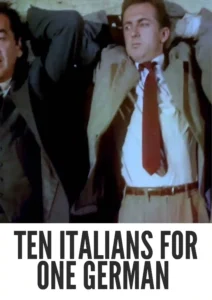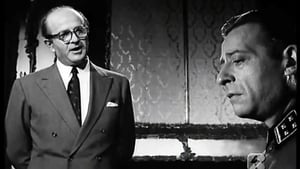Video Sources 0 Views

Synopsis
Prepare for a darkly comic and controversial ride with Ten Italians for One German, an Italian war comedy from 1966, now brilliantly colorized to both provoke thought and elicit uncomfortable laughter. Directed by Filippo Walter Ratti and featuring a cast led by Carlo Delle Piane, this film satirizes the absurdities and moral ambiguities of war through the eyes of Italian prisoners. Perfect for fans of classic Italian cinema and those with a taste for films that challenge conventional narratives, this HD download offers a fresh and vibrant take on a unique cult classic.
Ten Italians for One German is set during World War II and follows the story of ten Italian soldiers held as prisoners of war. The lives of these men take an unexpected turn when they learn that their fate is tied to the capture of a high-ranking German officer. The German army proposes an exchange: the life of the captured officer for the lives of these ten Italians.
The film explores the moral implications of this exchange, delving into the value of human life, the complexities of war, and the often blurred lines between right and wrong. As the ten Italians grapple with the knowledge that their lives depend on the fate of a single German, tensions rise, and their humanity is put to the test. Through a blend of dark humor, poignant moments, and sharp social commentary, the film challenges viewers to confront uncomfortable truths about war and its impact on the human psyche.
The film boasts a compelling cast, with notable performances from:
-
Carlo Delle Piane
-
Romano Giomini
-
Andrea Scotti
-
Luciano Pigozzi
Ten Italians for One German is a war comedy that skillfully blends humor with serious themes, offering a satirical perspective on the events of World War II. It uses dark comedy to explore the absurdities and moral dilemmas of war, challenging viewers to think critically about the consequences of conflict.
Released in 1966, Ten Italians for One German reflects the ongoing dialogue surrounding World War II within Italian cinema. The film was made during a period when filmmakers were increasingly willing to explore the complexities and moral ambiguities of the war, moving beyond simple narratives of heroism and victimhood. Ten Italians for One German stands as an example of this trend, using dark humor to confront uncomfortable truths about the war and its lasting impact on Italian society.
This colorized version of Ten Italians for One German has been carefully restored using modern digital techniques, enhancing the visual appeal while remaining sensitive to the film’s original tone and atmosphere. The colorization process involved detailed analysis of the grayscale tones, and application of appropriate colors to each scene. This intricate process breathes new life into the characters and settings, making the film more accessible to contemporary audiences. While debates about colorizing classic films continue, the goal is to broaden their appeal, ensuring they are appreciated by future generations.
-
: Filippo Walter Ratti
-
: Alessandro Ferraù, Bruno Leder
-
: Riccardo Pallottini
-
: 93 minutes
-
: MP4
-
: HD (1080p)
-
: Compatible with most devices, including smartphones, tablets, computers, and smart TVs.
Ten Italians for One German (1966) is a film that has sparked discussion and debate, due to its controversial subject matter and its use of dark humor to explore the themes of war and morality. While it may not be universally appreciated, it remains a significant work of Italian cinema, challenging viewers to confront difficult questions and offering a unique perspective on the legacy of World War II.
-
: What is Ten Italians for One German about?
-
A: Ten Italians for One German is a war comedy about ten Italian soldiers whose lives are tied to the fate of a captured German officer, forcing them to confront complex moral dilemmas.
-
-
: Is Ten Italians for One German (1966) a well-known film?
-
A: While not a mainstream blockbuster, Ten Italians for One German has earned recognition as a thought-provoking and controversial film within Italian cinema.
-
-
: Is this version of Ten Italians for One German colorized?
-
A: Yes, this version has been professionally colorized to enhance the viewing experience.
-
-
: What makes Ten Italians for One German interesting for classic film fans?
-
A: Ten Italians for One German offers a unique and challenging perspective on World War II, using dark humor and satire to explore complex moral issues.
-
-
: What is the download format?
-
A: The download format is MP4, which is compatible with most devices.
-
-
: What resolution is the download?
-
A: The resolution is HD (1080p), providing a high-quality viewing experience.
-
Watch Ten Italians for One German Today!










